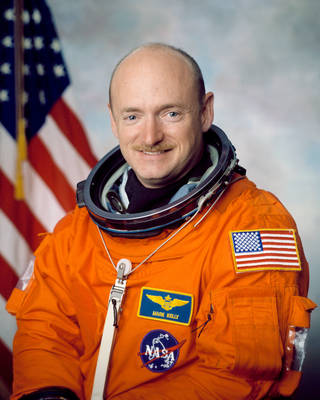Twins Study | About
Results from NASA’s Twins Study reveal some interesting, surprising, and assuring data of how a single human body adapted to and recovered from long-duration exposure to the extreme environment of space. NASA has a rigorous training process to prepare astronauts for their missions, a thoroughly planned lifestyle and work regime while in space, and an excellent rehabilitation and reconditioning program when they return to Earth. Thanks to these measures and the astronauts who tenaciously accomplish them, the human body remains robust and resilient even after spending a year in space. The valuable data gathered from the Twins Study will be used by NASA for decades to come, ensuring the safety and health of the men and women who navigate the outer reaches of space.


Scott Kelly (NASA astronaut, Ret.) Mark Kelly (NASA astronaut, Ret.)
Credits: NASA Credits: NASA
Background
A study new to NASA took place throughout the historical One-Year Mission beginning in March 2015 and ending in March 2016. The landmark Twins Study helped scientists better understand the impacts of spaceflight on a human body through the study of identical twins. Retired astronaut Scott Kelly spent one year in low-Earth orbit aboard the International Space Station while retired astronaut Mark Kelly, his identical twin, remained on Earth. The twins’ genetic similarity provided scientists with a reduced number of variables and an ideal control group, both important to scientific investigation.
Study investigations were selected as part of the Human Exploration Research Opportunities solicitation developed and managed by NASA’s Human Research Program.
Key Points
- The Twins Study demonstrated the resilience and robustness of how a human body can adapt to a multitude of changes induced by the spaceflight environment.
- 91.3% of Scott’s gene expression levels returned to normal [baseline] within six months of landing
- The degree of epigenetic changes observed in Scott in space was no greater than that observed in Mark on Earth
- The flu vaccine administered in space worked exactly like on Earth (Scott’s body reacted the same)
- Changes in Scott’s microbiome diversity in space were no greater than stress-related changes scientists observe on Earth
- The Twins Study provided the most comprehensive and integrated molecular view to date of how a human responds to spaceflight.
- 10 individual investigations supported by 84 researchers
- 12 universities in eight states
- One coordinated study led by NASA’s Human Research Program
- The Twins Study may guide future biomedical space research in studying molecular profiles of astronauts.
- Key genes were identified to help target for monitoring the health of future astronauts for possible personalized countermeasures
- Research from the on-going Telomeres investigation aboard space station will expand our understanding of the significance of Scott’s telomere dynamics behavior (lengthening in flight and then majority returning to baseline within 48 hours of landing)
- Long-term effects of this research will be studied for years to come, including aboard the space station during the Integrated One-Year Mission Project, currently under development































